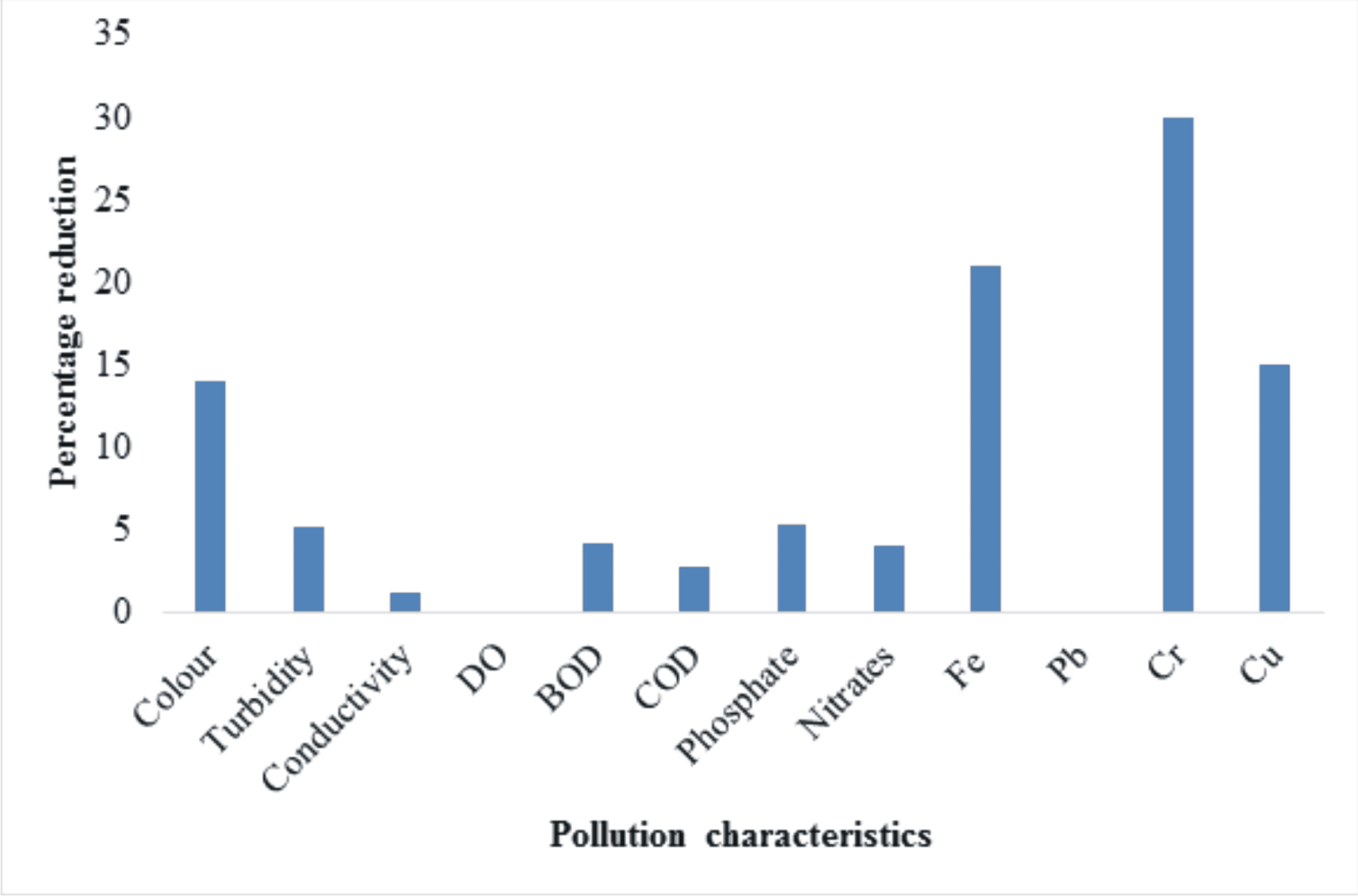Low cost adsorbent to reduce pollutants in Owa-Adlidinma, influence of oil flow station Southern Nigeria
Abstract
The capacity of kaolin clays from UR (Udophori) OZ (Ozanagogo) and AU(Auchi) for removal of pollutants from wastewater and run-off at Owa-Alidinma. X-ray diffractometer, ultraviolet /visible spectrophotometer and Atomic Absorption spectrophotometer were used for analysis of clays and pollutant. Percolation rate studies and performance efficiency was carried out to choose the best combination ratio of pebble/clay ratio (1:3) was found suitable using batch and continuous columns treatment methods using standard methods of analysis Oz clay type gave the best result from the four continuous treatment cloums. The batch and continues treatment were tried. Oz clay type gave the best result for the reduction of pollutants using the four continuous columns, for batch treatment turbidity (5.16-17.67%) Biological Oxygen Demand (BOD) (4.11-14.93%), Chemical Oxygen Demand (COD) (7.16-15.75%), phosphorous (5.33-15.78%), Nitrates (4.00-9.70%), Iron (Fe) (21.00-26.00%), Chromium (Cr) (30.00-16.12%), Copper (Cu) (15.00-24.49%) and Zinc (Zn) (6.20-13.40%) reduction, while for continuous column treatment, BOD (89.73-95.54%), COD (86.50-90.35%), phosphate (77.10-84.82%), Fe (86.50-91.00%), Cr and Zn not detected, Cu (94.78-96.10%) respectively. Final effluent characteristics were found to be comparable with World Health O,rganisation (WHO), Standard Organisation Nigeria (SON) and National Environmental Standard and Regulation Enforcement Agency (NESREA) standards for various purposes. This method is low energy consuming, easy to manipulate and can alleviate the problem of fresh water shortage in these areas and access to potable water


